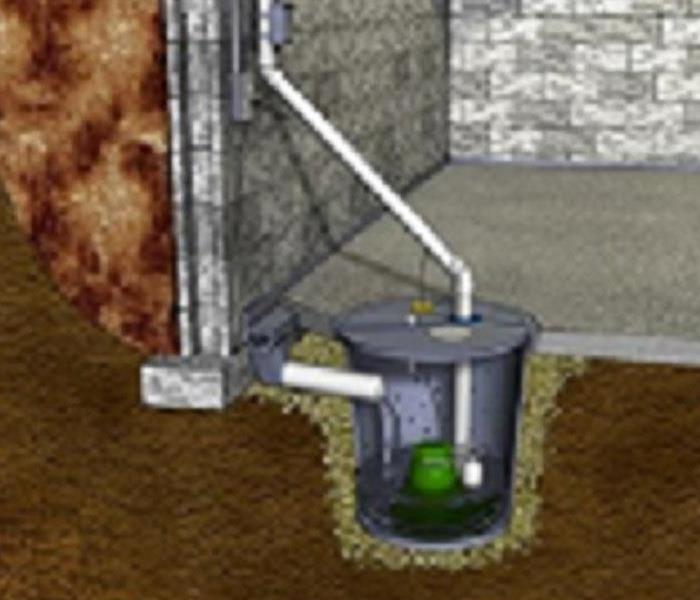Common Causes for Sump Pump Failure
2/4/2020 (Permalink)
 A sump pump sits in the basement, either beneath or above the floor. It pumps out water that collects in the sump basin, discharging it outdoors.
A sump pump sits in the basement, either beneath or above the floor. It pumps out water that collects in the sump basin, discharging it outdoors.
Power Failure
Your primary sump pump should not be treated any different than any other appliance in your home - without power, it is completely worthless. As a safeguard, invest in a high-quality battery back-up sump pump. A battery kept continually charged by the backup system operates a separate pump linked to the discharge pipe, providing you hours of protection until power is restored. Some backup pumps even monitor the condition of the battery and alert you when it needs to be replaced.
Frozen Discharge Pipe
If the discharge pipe pitch is not installed properly, water will collect and eventually freeze, causing a blockage.
Switch Stuck in Place
There are several different types of sump float switches. Vertical and tethered floats are the most common. Vertical floats seem to work the best as tethered floats are known for getting stuck on the side walls of the sump pit (resulting in a flooded basement).
Over-worked / Under-Powered Sump Pump
Not all pumps are created equal. Make sure you install the correct horsepower pump capable of keeping up with your flow of water.
Old Age
It is generally recommended that sump pumps should be replaced every five to seven years in order to be reasonably safe. Don’t wait until it’s too late!
If your sump pump fails and you have water damage, call SERVPRO of Greeley/Windsor, 970-353-1388. We answer our phone 24/7/365



 24/7 Emergency Service
24/7 Emergency Service